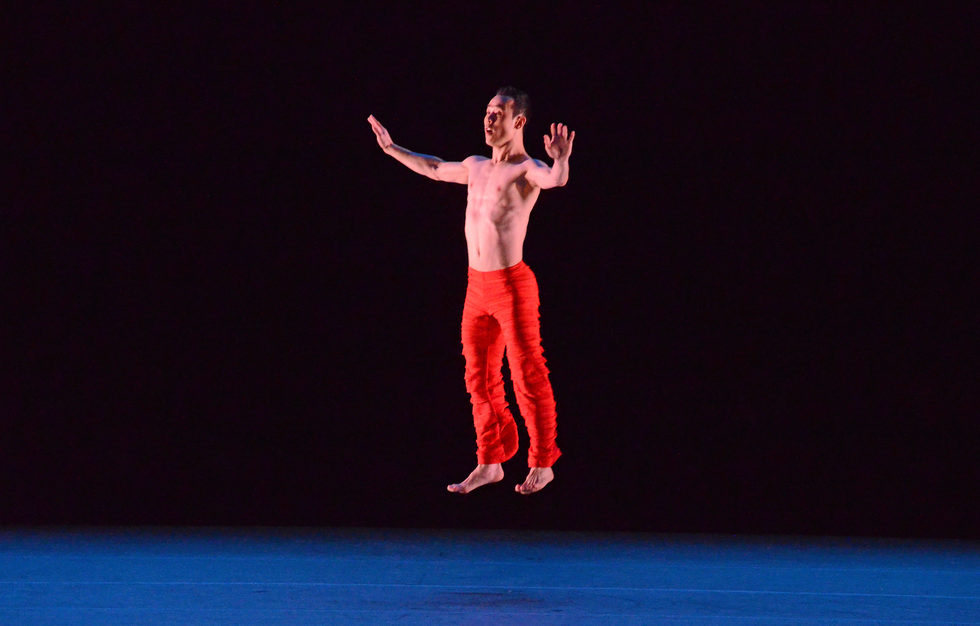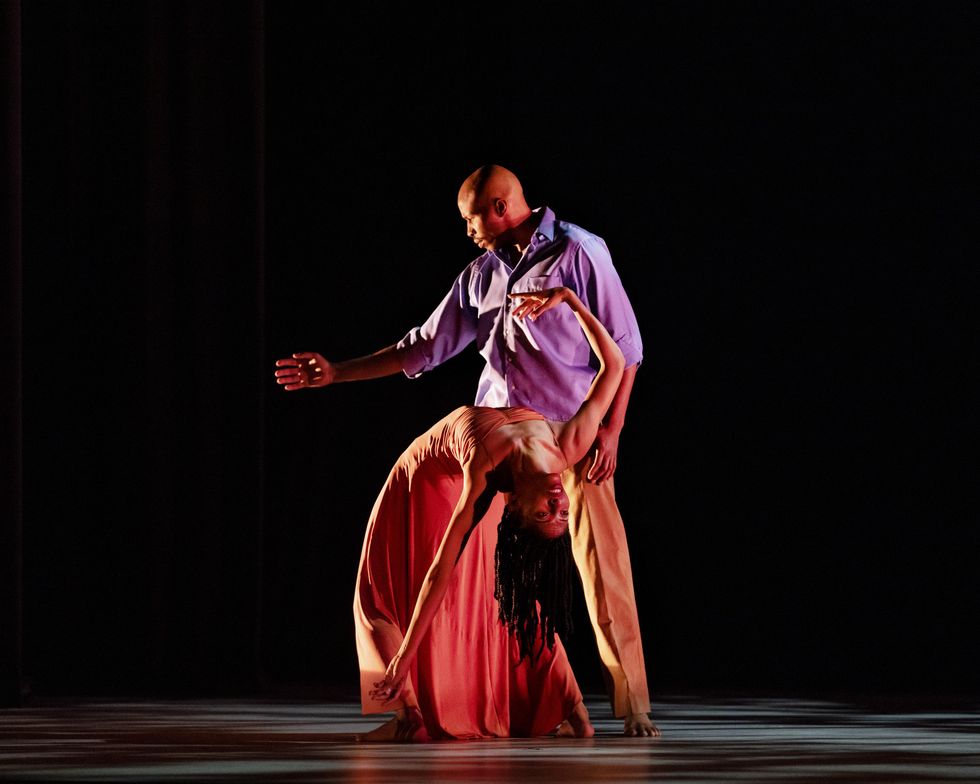Robert Battle at Full Throttle

Takademe James R. Brantley, Courtesy AAADT
Well, the program at City Center reminded us in a big way. Robert Battle is a choreographer of masterful restraint and sudden explosiveness. He is a choreographer who has definite musical tastes and finds a different, original movement vocabulary for each of those music choices.
With a disciplined sense of suspense, he makes us wait for the big moment. In Mass (2004), a devotional piece of skittering, swirling and vibrating and a modernist sense of design, the 16 dancers sometimes lock into off-kilter positions of stillness. And then a burst of momentum pushes these monklike figures across the stage in an agitated, unstoppable herd. In his portion of Love Stories (2004, originally a triptych with contributions from Judith Jamison and Rennie Harris), we crave to be carried on a high by Stevie Wonder’s songs, but Battle reins the dancers in with strict unison until the very end, when he unleashes a torrent of wild revelry.
In Unfold (2007), the extreme attenuation for the woman—in this case a ravishingly arching Jacqueline Green—is sustained throughout this short work to the operatic voice of Leontyne Price. Green’s partner, Jeroboam Bozeman, seems like a lost soul clinging to his memories. With a slow développé to the side, toes pointing upward, Green hits the high note just when Price does. It’s the kind of satisfying convergence that Battle is careful not to overuse.

Unfold Paul Kolnik, Courtesy AAADT
The evening’s emotional range went from the desperation of In/Side (2008)—which finds Yannick Lebrun staggering and spiraling to Nina Simone singing “with your kiss life begins”—to the giddiness of Ella (2008), in which two dancers (Renaldo Maurice and Patrick Coker) physicalize Ella Fitzgerald’s speedy scatting that ricochets between popular tunes of the 50s and earlier.
The work that premiered this season, For Four, laced its full-bodied jazz moves with chaîné turns and cabrioles, and somehow it all fit into the robust Wynton Marsalis score. The projection of an American flag onto one dancer seemed to suddenly curtail the dancers’ freedom and make them feel trapped.
Takademe
(1999) never fails to excite. With crackling energy, Kanji Segawa mirrors Sheila Chandra’s staccato stutterings, deep exhalations and vocal spurts. A brief, enchanting masterwork, Takademe is where language, voice and movement mingle—at top speed and intricacy.
In his opening speech to this program honoring him, Battle graciously pointed out that David Parsons gave him his first chance to choreograph, and he, Battle, has given Jamar Roberts his first chance. And so the chain of extraordinary artistry continues.



